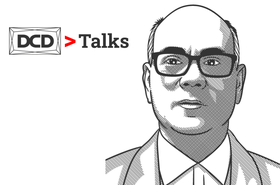Imagine a massive, interconnected neural network. Not the biological kind, but a symphony of data centers acting as processing nodes, humming with silent efficiency.
Traffic lights function with real-time prediction algorithms, hospitals leverage AI for advanced diagnostics, and smart grids automatically adjust energy usage in businesses and homes – all orchestrated by a complex digital nervous system.
This intricate web of technology, often invisible to the user, forms the critical infrastructure that underpins our modern society.
Yet, as we race towards an era of quantum computing and ever-more sophisticated AI, a critical question emerges: how can we ensure the scalability, fault tolerance, and energy resiliency/efficiency of this infrastructure?
It's a collective challenge with immense ramifications. By addressing it, we pave the way for a future where humanity thrives in symbiosis with its digital ecosystem.
As an industry innovator with expertise in mission-critical systems, I've dedicated my career to understanding the intricate workings of these technological systems. They are, quite literally, the lifeblood of our digital civilization.
Data centers, acting as the computational hearts, power grids as the electrical circulatory system, and communication networks as the interconnected neural pathways – these elements form the infrastructure that facilitates the flow of information, the very essence of modern life.
But like any complex biological system, they have vulnerabilities. A sophisticated cyberattack can infiltrate a data center, disrupting critical services. A natural disaster can sever communication links, isolating entire regions.
These vulnerabilities highlight the paramount importance of resilience. We must design and maintain infrastructure that can withstand these disruptions, adapt to changing demands, and recover swiftly from setbacks.
This intricate dance becomes even more critical as we attempt to seamlessly integrate revolutionary technologies like artificial intelligence (AI) into the fabric of our critical infrastructure.
As we know, AI offers incredible potential, functioning like a highly sophisticated adaptive learning algorithm within the data center and critical infrastructure network. Optimizing energy distribution across the grid in real-time, predicting equipment failures before they occur, and automating complex maintenance and operations tasks – all with unparalleled efficiency.
However, integrating such an advanced learning system presents new challenges. The security of these AI systems becomes paramount. Malicious actors, akin to biological viruses attempting to infiltrate a living organism, could exploit vulnerabilities to manipulate AI algorithms.
This manipulation could have cascading effects, however the internal security will also be robust, monitoring and taking action to avoid catastrophic disruptions to the entire infrastructure.
Furthermore, the ethical implications of deploying AI within critical infrastructure demand careful consideration. Who is ultimately responsible for the decisions made by these AI systems? How can we ensure fairness and transparency in their operation? These are critical questions that necessitate ongoing dialogue and collaboration.
Engineers, policymakers, and ethicists must work together to establish robust frameworks and protocols that govern the development and implementation of AI algorithms in these sensitive environments; perhaps a model similar to how the FDA approves new medication can be borrowed.
The advent of quantum computing adds even another layer of complexity as our future races towards us at a blinding speed to this ever-evolving landscape. While still in its nascent stages, quantum computers hold the potential to revolutionize fields like cryptography.
However, this immense power comes with a potential downside. Traditional encryption methods, the current bedrock of our cybersecurity practices, will become vulnerable to the immense processing capabilities of quantum computers.
To stay ahead of this evolving threat, we must be proactive in developing new encryption algorithms and security protocols that can withstand the onslaught of this revolutionary technology.
Navigating these converging challenges is further complicated by the ever-present need for balanced energy – encompassing demand, sustainability, reliability, and responsible environmental practices, etc. Here's where the concept of energy security becomes paramount.
Transitioning towards cleaner, more sustainable energy sources, like nuclear which may turn out to be our best option on a reduced capacity scale, fuel cells, combined heat and power plants, solar, wind, and geothermal, is no longer just an environmental imperative but also a diversification strategy for enhancing the resilience of our power grids.
Ultimately, the future we create with technology is a choice. Will we be passive observers, or will we become active participants in its development and deployment? The decisions we make today regarding workforce development, energy security, and ethical considerations in AI will determine whether this digital future empowers or enslaves us.
As guardians of our digital society, we have a responsibility to design and maintain robust, secure, and sustainable infrastructures. As mentors, we have an obligation to guide the next generation and equip them with the skills and knowledge to navigate this complex digital landscape.
But our responsibility extends beyond our professional roles. As citizens, we all have a role to play in ensuring that this digital tapestry strengthens, not weakens, the fabric of our society.
More from PMC Group I
-

DCD>Talks quantum computing synergy with Peter Curtis | PMC Group I
Peter Curtis joins us at DCD>Connect | New York 2024, to discuss how AI will change when Quantum Computing propels our industry forward
-

Sponsored Embracing the future: The evolutionary shift in data center operations through AI
At the core of maintaining seamless data center operations is the practice of predictive maintenance
-

Sponsored AI: The indispensable ally in the information age
Achieving expertise preservation and excellence in the data center with AI

